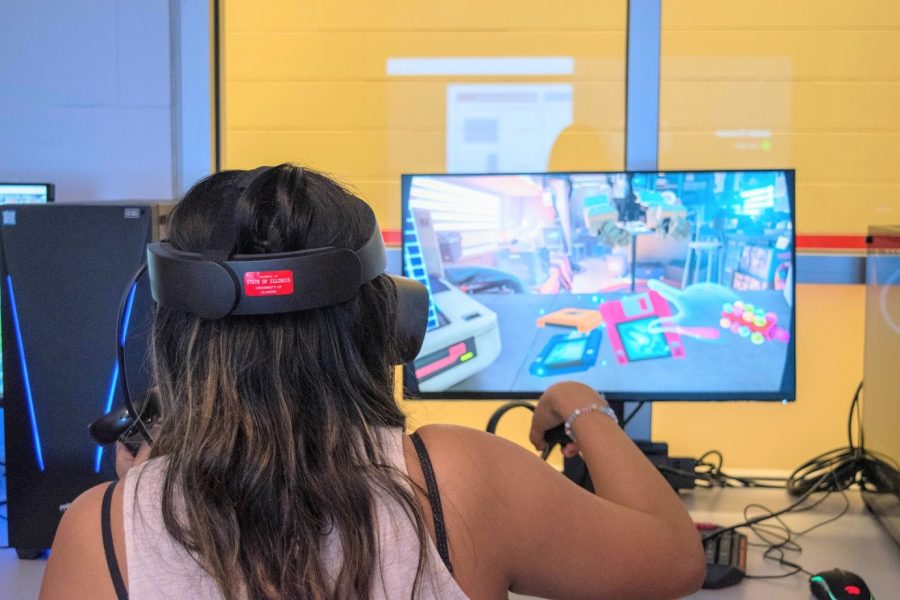Virtual reality remains inaccessible for students with disabilities
Nancy Torres, junior in Business, explores the capabilities of the virtual reality headset as she plays one of the interactive games on the computer in the Virtual Reality Lab at the Armory on Oct. 2. It is being debated whether VR technology assists in learning and should be implemented in classrooms.
October 31, 2019
Virtual reality technology is rapidly being integrated into classroom learning, but it may still be inaccessible for people with disabilities.
Laura Shackelford, associate professor in LAS and Medicine, is one of the professors at the forefront of experimenting with and implementing virtual reality technology in an educational setting.
“Education was the one place that was truly resisting implementing (VR) technology,” Shackelford said. “That’s actually why we started this project, to try to figure out how it can help and if it does improve learning.”
The research appears to point to potential benefits for the implementation of VR technology in an educational setting. According to a literature review conducted at the Institute for Educational Technology, it appears that from around middle school, the use of VR tech combined with the presence of a teacher may help students grasp less concrete subjects.
Shackelford, who uses VR technology in her ANTH 399: Virtual Archaeology class to help give students the experience of archaeological fieldwork, has noted how the technology has helped break down potential barriers in the field.
Get The Daily Illini in your inbox!
All archaeologists must attend a field school to learn necessary skills, but since field schools are expensive, so many potential students may be discouraged from exploring archaeology as a career. However, through the use of VR technology, students can get a feel of what it is like to actually be an archaeologist without first having to commit to field school. This technology does not, however, remove the necessity to attend a field school, Shackelford said.
Shackelford and Cameron Merrill, graduate student in Engineering, collaborated to create the VR program used in ANTH 399. The program immerses students in an archaeological site, while also implementing game-based learning in the form of a more narrative-based experience.
While this technology may help break down barriers to learning, it still may present its own issues, which there has been a push to identify.
As Shackelford said, there is very little existing research into the subject of VR accessibility for the differently-abled, yet there are some clear issues with the technology that may prevent it from being accessible in its current form. For example, some of the controls used in her archaeology class may be difficult to operate for people with disabilities.
“If this technology is actually going to be used to learn, we don’t want to immediately have there be a barrier for some students,” Shackelford said.
The issues haven’t necessarily posed a challenge yet, and in fact, some things that would have potentially created an issue have already been amended, such as wheelchairs being made with new materials that don’t interfere with VR sensors. But there is still an urge to identify more potential issues before they become problems down the road.
“What Dr. Shackelford is doing is being really preemptive in realizing this is a need that we need to meet, and how do we go about figuring out what it means to meet that need,” said Jim Wentworth, e-learning professional at the Innovation Studio and Virtual Reality Lab. “So I don’t see it as much of an issue of meeting problems that have arisen as realizing that this needs to be more generalized to as many people as possible.”
This is not the first time the University has striven to be accommodating for all people.
“This is a university that has been on the forefront of things, like wheelchair sports,” Shackelford said, referencing the fact that the University of Illinois was home to the first college wheelchair basketball team, “And it’s important for us to just continue that.”







